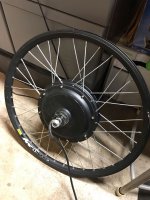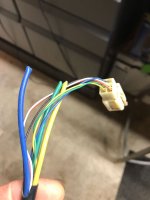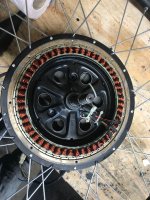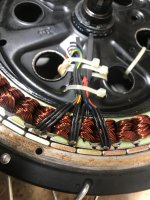Balmorhea said:
Pedal power works for vehicles that require 100-200W continuous, 300-1000W peak. If your performance requirements don't fit in this range, don't bother.
The thing is, I'm seeking to build a vehicle that can do 20-25 mph on 100-200W continuous and maintain highway speeds at 1,000W peak. With that vehicle basically built, I will then shove as much power as I can into it in the interest of automobile-like acceleration performance and top speed, criteria that 100-200W continuous and 1,000W peak is generally a poor fit for. And if it can still do 20-25 mph on 100-200W continuous and maintain highway speeds at 1,000W peak with the motor installed, that means that human power is still a good fit for that speed range, and can also be worthy of supplementing the electric motor at all automobile-legal speeds in the interest of providing a significant efficiency increase and range extension. It also fits the design philosophy of building a vehicle that is not grid-reliant by many meanings of the word "grid", and also renders moot the concept of range anxiety.
It's more like wanting a small 100+ mph capable speed boat, with a deployable sail as backup and designed in such a way so the sail can supplement the vehicle's performance at low power demand and/or speed but for the sail's presence not to interfere with the vehicle's maximum performance potential when the sail is not in use, than it is a 10,000 TEU container ship.
ZeroEm said:
When Luke tested the leafmotor it look like 2000w continuous was doable. I'm sure many things would factor in, I'm thinking that is a lot for a Velomobile.
2,000W continuous would get a well-designed body shell to maintain 70 mph. Getting that design is easier said than done though. A lot of aerodynamic work will be necessary for it to be stable with heavier vehicles passing it at higher speeds and with strong cross winds, which is going to work against the goal of keeping drag low. The center of pressure is going to need to remain behind the center of gravity in as many operating conditions as possible to keep the thing straight, and it's going to need net downforce over the entire vehicle, and to retain these conditions over uneven road surfaces that can introduce unanticipated yaw.
Sustained 70 mph is definitely not happening with my zip-tied, taped-up, coroplast rolling coffin! It's been over 50 mph downhill for short periods, and was stable, could still safely make lane changes, and felt well-planted, but I wouldn't trust it at anything more. I wouldn't trust the Schwalbe Marathon Greenguard tires and Velocity USA wheels for long-distance cruising at anything more than 35 mph, really. 70 mph might just rip the body apart!
I think a lot about more power, less drag, with regen. I keep coming up with something like Grin's front DD or a leafmotor and a geared or midrive that would disengage to keep drag down. Most geared motors just do not put out much power. The trouble of a high power mid motor is that trouble.
Those front drive all-axle motors are still quite lossy. The published Hysteresis drag torque is 0.45 Nm, and the Eddy Current Drag Torque is 0.0005 Nm/rpm. A motor in each front wheel, assuming a 20" bike wheel, for the pair is going to require 59W at 20 mph, 79W at 25 mph, 101W at 30 mph! In something as efficient as a velomobile, those cogging losses could easily be costing an extra 5-7 mph of speed when operated unpowered versus not having a motor at all. If they had thinner 0.2mm or smaller laminations instead of the 0.35mm they currently have, those losses could be cut significantly, but to me, the ideal is just sticking with one motor that is of low losses and of sufficient peak efficiency that it can make high peak power without melting so that when operating solely under human power with a dead battery, the motor is only costing the rider 2-3 mph at 25 mph on flat ground.
I'd like to see an affordable 7-lb rear-drive synchronous reluctance hub motor of 97-98% peak efficiency that can fit a 9-speed cluster in a 135mm dropout set, that is designed for mechanical reliability(especially on the human-powered side), and can perhaps handle short bursts of 15 kW peak for 30 seconds at a time and do about 2 kW continuous.





